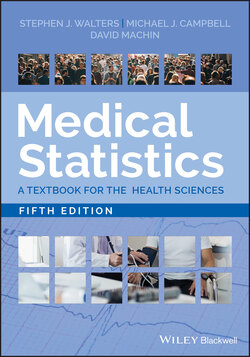Читать книгу Medical Statistics - David Machin - Страница 87
Example – Importance of Considering both Absolute Risk and Relative Risk
ОглавлениеWomen of reproductive age not using the combined oral contraceptive pill have a risk of deep vein thrombosis (DVT) of about 2 per 10 000 women per year (Stegeman et al. 2013). Use of combined oral contraceptives increases the risk of DVT compared with non‐use by a relative risk of 4 to 8 per 10 000 women per year, which would seem a large extra risk. However, the absolute increase in risk is 8/10 000 – 2/10 000 = 6/10 000 = 0.0006, or an additional 6 women with DVTs in 10 000 years of exposure. This increased risk is very small and hence may be considered worth taking, when balanced against other factors such as cost or convenience. Also, it is worth mentioning that a pregnant woman has a risk of a DVT of about 11 per 10 000 per year (Kourlaba et al. 2016); so the risk of DVT if you are pregnant is greater than the risk of a DVT when using the contraceptive pill, of 8 per 10 000 per year. Thus when one reads in the newspapers about a new risk to health that has been discovered, often only the relative risk is quoted, but one should ask about the baseline risk or incidence of the outcome (given you are not exposed to the risk factor) and the ARD, which may be negligible. If you are at very low risk, then you will remain at very low risk even when exposed to a hazard, unless the relative risk for the hazard is enormous!
